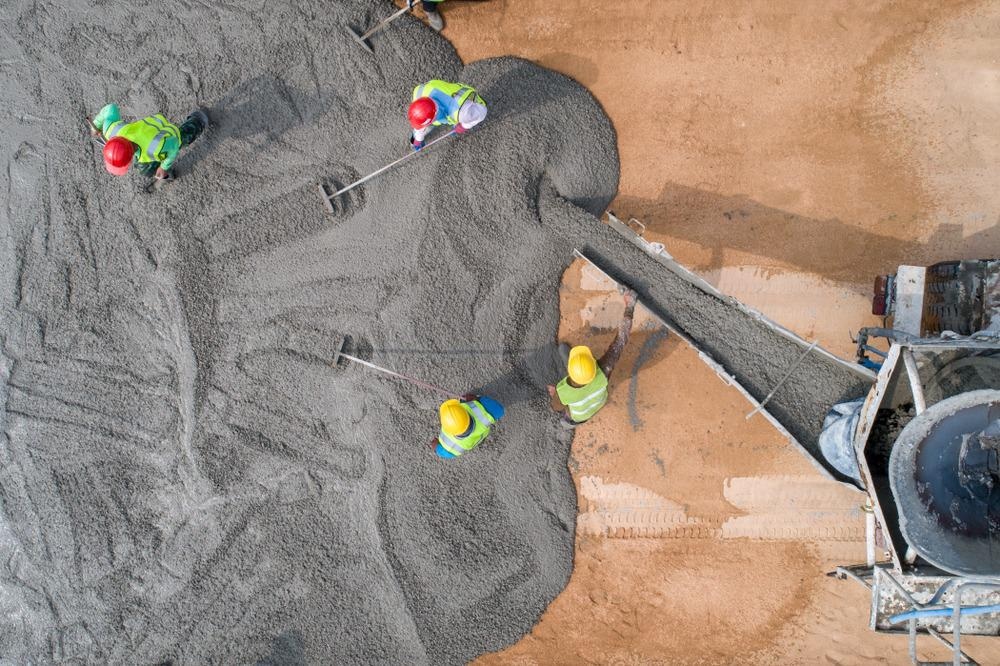This article considers laser diffraction particle size analysis and how it can be applied to cement samples to analyze compressive strength and other factors.

Image Credit: Bannafarsai_Stock/Shutterstock.com
What is Particle Size Analysis?
Particle size analysis is a technique for determining the particle size distribution in a material. Solid materials, emulsions, suspensions, and even aerosols may all benefit from particle size analysis.
Some particle size procedures are applicable to a broad variety of samples, while others are limited to particular uses. It is critical to choose the best procedure for each sample since various methods might provide drastically different findings for the same substance.
Particle size analysis is a critical test that is used in a multitude of sectors for quality assurance. Particle size is a significant component in affecting the efficiency of production operations
Laser Diffraction Analysis
Laser diffraction analysis is a technique used for materials ranging in size from a hundred nanometers to many millimeters. The large dynamic range from micrometers to millimeters is one of the major reasons for its use.
This method features quick measurements and produces findings in under a minute. With huge numbers of particles taken in each experiment, the repeatability factor is high.
Laser diffraction analyzes the angular change in intensity of light scattered when a laser beam travels throughout a dispersed particulate sample to determine particle size distributions. Tiny particles scatter light at large angles, while big particles scatter light at small angles in response to the laser beam.
By using the Mie theory of light scattering, the angular scattering intensity data is then evaluated to determine the particle size distribution responsible for its scattering pattern. The particle size is expressed as the equivalent spherical diameter.
Laser Diffraction Particle Size Analysis of Cement
Laser diffraction has been used to determine the particle size distributions of several cement specimens. Laser diffraction devices work by shining a collimated laser on particles and monitoring the scattered light at various angles.
The Advantage of Particle Size Analysis of Cement
The angle where the particles scatter light is dependent on their size; hence, particle size information may be collected. Using a suitable scattering model, its particle size distribution may be determined by monitoring the angular dependence of such scattered light.
A dispersion unit disperses the sample and passes it through the measuring cell. According to which is most suited for the purpose, samples might be disseminated wet or dry. The dry dispersal unit for cement allows for easier measurement of a greater volume of material while also avoiding the extra expense of the solvent that would be necessary for a wet dispersing of cement.
More from AZoM: Differential Thermal Analysis of Technical Ceramics
Without involving the operator, laser diffraction analysis assesses the complete grain size distribution with high resolution. The grinding grade, as well as too high or too changing fine content (less than 2 µm) or coarse content, are consistently and quickly identified.
Laser diffraction, with its intense dry dispersion, provides unrivaled sensitivity and great repeatability over the full cement particle size range, providing user-independent readings in seconds.
What Does It Reveal?
The particle size distribution generated from the grinding process determines the crucial strength and curing qualities of cement. Because of the increased surface area, the concrete's compressive strength and curing properties improve as the particle size decreases.
If different cement samples have the same normal size or surface area, the one with the narrower size dispersion has greater compressive strength.
Cost Analysis of Laser Diffraction Particle Size Analysis of Cement
Laser diffraction data correlates more sensitively with performance qualities like strength and curing quality, and the technique may be used to assess in real-time. Experimental correlations are being utilized to define more accurate, relevant milling requirements that, when combined with on-line analysis, result in a better product at a reduced cost.
Tightening automated process control, as well as the use of substitute materials in the finished product, including such fly ash or blast furnace slag, are essential strategies for decreasing waste and energy consumption. Integrating analytics and manufacturing with a traditional at-line system improves the efficiency of human and automated operations, hence lowering production costs.
New Invention with Software Analysis Integration
Because of the high energy needs of final milling, better monitoring software of grinding efficiency and adjustment of classifier speed results in an in-spec product with considerable energy efficiency benefits and, as a result, cost savings. This is best accomplished using a laser diffraction system that is simple to use and produces consistent, reproducible results regardless of which person is operating the device.
Furthermore, by storing the control for each cement quality in a computer database, every freshly manufactured cement sample for all grades may be compared to the optimum product fineness characteristics in seconds.
The user will know when the newest grind fulfills the criteria for that grade of cement owing to the additional software advantage of being able to establish upper and lower set point limitations on each important parameter.
References and Further Reading
Boughton, P. (2013). Particle size analysis reduces cement manufacturing costs. Engineer Live. https://www.engineerlive.com/content/particle-size-analysis-reduces-cement-manufacturing-costs
Ferraris, C. (2006). Particle size distribution by LASER diffraction spectrometry: Application to cementitious powders. https://www.researchgate.net/publication/241176386_Particle_size_distribution_by_LASER_diffraction_spectrometry_Application_to_cementitious_powders
Pugh, D., et al. (2021). Rapid Laboratory Particle Size Analysis of Cements Using Laser Diffraction. Application Research Lab, Bettersize Instruments Ltd. https://www.bettersizeinstruments.com/uploads/file/rapid-laboratory-particle-size-analysis-of-cements-using-laser-diffraction.pdf
Harrigan, E. (2013). Measuring Cement Particle Size and Surface Area by Laser Diffraction. National Cooperative Highgway Research Program. https://www.nap.edu/read/22587/chapter/1
Disclaimer: The views expressed here are those of the author expressed in their private capacity and do not necessarily represent the views of AZoM.com Limited T/A AZoNetwork the owner and operator of this website. This disclaimer forms part of the Terms and conditions of use of this website.